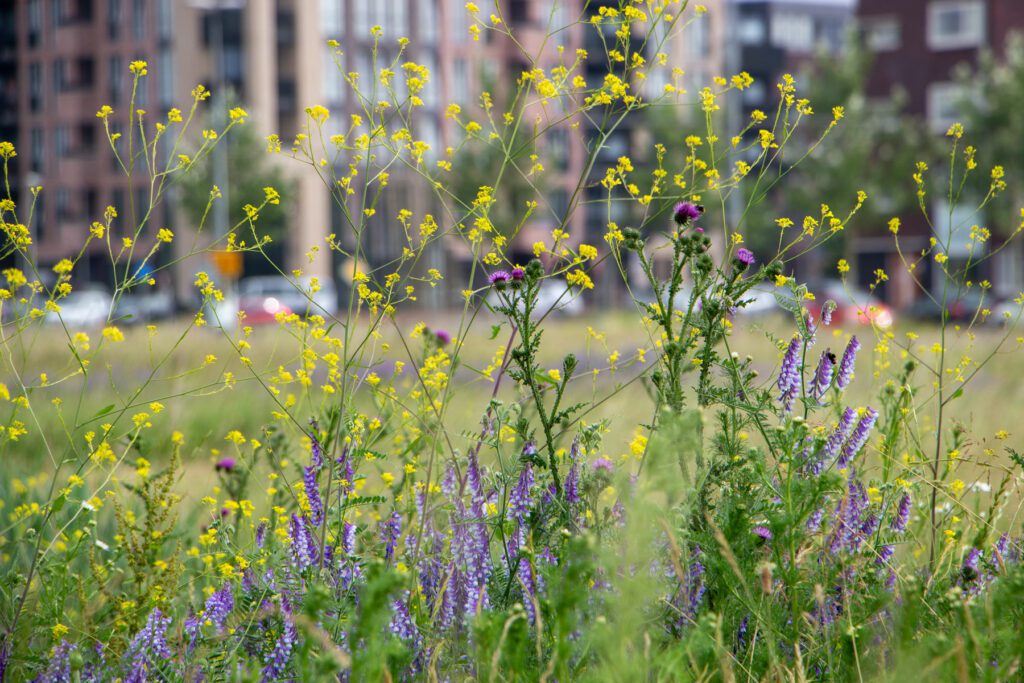Author
On 28 May, the government launched a consultation with regard to improving the implementation of biodiversity net gain (“BNG“) for minor, medium and brownfield development. In this article, we summarise the consultation paper’s proposals for minor development.
For further background and updates on Biodiversity Net Gain, please visit our prior articles here.
What is ‘minor development’?
Minor development represents the majority of planning applications. ‘Minor development’ means ‘small development’ as defined in section 3 (3) of the Biodiversity Gain Requirements (Exemptions) Regulations 2024 (the “Exemptions Regulations“). As cited in the consultation paper, it includes:
- Residential development where the number of dwellings is between 1 – 9 on a site of an area 1 hectare or less, or if the number of dwellings is unknown, the site area is less than 0.5 hectares;
- Commercial development where floor space created is less than 1,000 square metres or total site area is less than 1 hectare;
- Development that is not the winning and working of minerals or the use of land for mineral-working deposits; and
- Development that is not waste development.
What exemptions to the BNG regime currently apply for minor development?
The Exemption Regulations provide for various exemptions from the BNG scheme of which the following are relevant to minor developments:
- De minimis Exemption (Regulation 4); applies to development that (i) does not impact an onsite priority habitat and (ii) impacts less than 25 square metres of onsite habitat that has biodiversity value greater than zero and impacts less than five metres of onsite linear habitat;
- Householder applications (Regulation 5); the government paper cites examples such as ‘home extensions’ and ‘conservatories’; and
- Self-build and custom build applications (Regulation 8); applies to development that (i) consists of no more than nine dwellings (ii) is carried out on a site which has an area no larger than 0.5 hectares and (iii) consists exclusively of dwellings which are self-build or custom housebuilding.
The consultation paper also flags that, where minor development is caught by the BNG scheme, developers may use a simplified ‘small sites’ version of the statutory biodiversity metric tool. This has cost and time benefits; for example, an ecologist is not required to complete it.
So, given the available exemptions, why has a consultation been proposed?
The government is keen to support small and medium sized housebuilders, and it is they who are more likely to build out minor development sites.
The government reports that minor development represents the majority of planning applications – circa 84% in the year to December 2024 — hence the focus on this sector.
Feedback to government on minor development has reported increased costs and steps in the planning process, and increased costs where onsite BNG is not viable. The government has also given examples of BNG adherence resulting in questionable environmental outcomes for minor development. For example, a four-bedroom dwelling on a 900sqm site having to purchase fractional units of mixed scrub from a provider over 200 miles away.
On the flip side, the paper reports figures from the Planning Portal’s ‘Biodiversity Net Gain: The Story so Far White Paper’, which states that, from September – December 2024, 75% of non-householder planning applications claimed the de minimis exemption.
What is the government proposing?
Two ‘options packages’ to tackle the issues facing minor development compliance with BNG:
- ‘Targeted Revisions’
- Removing the ‘self and custom build development’ exemption and replacing it with an exemption for single dwelling houses on a site of less than 0.1 hectares with no onsite priority habitat, and where the single dwelling house is the primary purpose of the development.
- Extending the de minimis threshold. This seeks to address developers having to purchase very small numbers of off-site units at a disproportionate cost. Different thresholds are being proposed from 50 square metres to 250 square metres.
- Full exemption for minor developments
The government recognises this blanket approach would significantly reduce the amount of habitat creation and enhancement due to the reduced number of developments delivering BNG.
Market consequences are also commented on. Transactions for minor developments represent 80% of off-site transactions to date – Option Two would undermine the government’s ambitions around private investment in nature recovery.
Other touted approaches/options beyond amendments to exemptions?
- Amending the Biodiversity Gain Hierarchy (“BGH“).
At a high level, the BGH encourages developers to address the adverse effects of development through (i) the creation and enhancement of biodiversity onsite (ii) where (i) is not possible, through offsite credits and (iii) through the purchase of statutory credits, as a last resort[1]. The government paper floats putting onsite and offsite BNG on a level footing, relieving applicants of the requirement to evidence attempted compliance with onsite BNG before their purchase of offsite credits. Statutory credits are to remain a last resort.
- Amendments to the Spatial Risk Multiplier (“SRM“) for minor development
The SRM incentivises developers seeking offsite credits to ‘buy local’. The consultation paper states that developers require 1.33x more offsite credits when purchasing in neighbouring LPAs, and 2x more units when purchasing from the national market.
One proposal is to disapply the SRM – this would make it easier for developers to source credits, however could have negative consequences for local biodiversity.
Another proposal is to widen the catchment area for ‘local credits’ by aligning the catchment area for credits with local nature recovery strategies as opposed to local planning authority boundaries. This would apply for all development, not just minor development. Again, this may mean offsite habitat delivery is further from the site in question.
Not discussed in this article:
The consultation paper also raises new exemptions in respect of parks, public gardens, playing field developments, development whose primary aim is conservation/enhancement of biodiversity, and temporary development.
The consultation paper also looks at streamlining the small sites metric (and considering whether it could apply to medium development), and BNG in respect of brownfield developments with ‘Open Mosaic Habitat’.
We have not commented on these aspects of the consultation paper.
[1] See section 37A Town and Country Planning (Development Management Procedure) (England) Order 2015 for more detail
Print article


